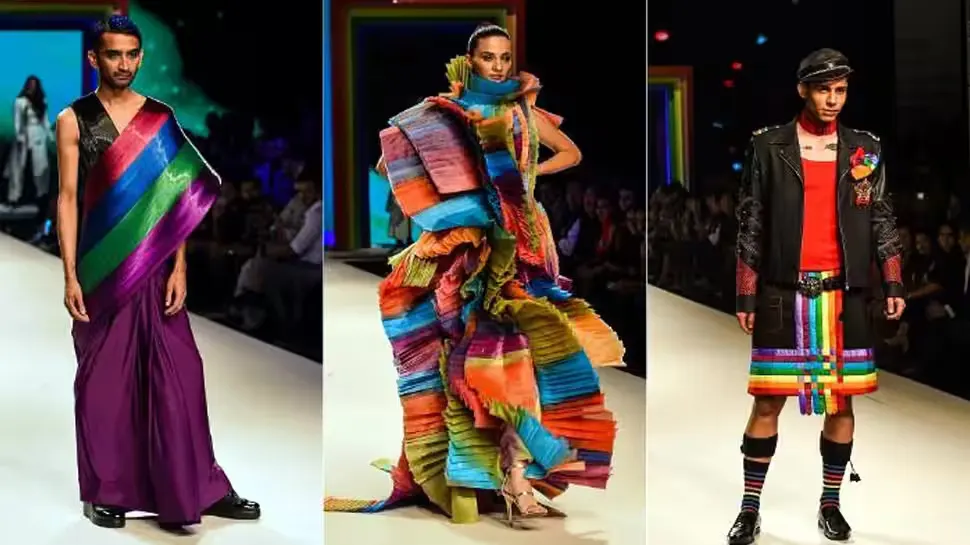
Fashion is often viewed as more than just a means of covering one's body; it acts as a profound form of self-expression that reflects individual identity, moods, values, and social contexts. This multifaceted relationship between fashion and self-expression highlights the psychological impact of clothing choices and their significance in conveying one's personality and aspirations.
Fashion as a Reflection of Identity

Clothing choices serve as powerful indicators of personal beliefs, cultural backgrounds, and individual tastes. Each outfit can communicate distinct messages about who we are, allowing individuals to present their unique identities to the world. The colors and styles chosen can express moods and character traits; for example, vibrant colors may portray boldness, while muted tones might signify a more reserved personality[3][5][10]. According to Rachel Zoe, fashion serves as a nonverbal means of communication, projecting one’s identity without needing words[10].
Moreover, our stylistic preferences often reflect our self-concept, which encompasses how we see ourselves and how we want others to perceive us. When individuals wear clothing that resonates with their self-image, it can enhance their overall self-esteem and confidence. This notion is supported by psychological theories such as 'enclothed cognition,' which suggests that the attire we choose can significantly affect our thoughts, behaviors, and emotional states[4][8]. For instance, individuals often feel empowered and confident when dressed in formal attire, as it can instill feelings of authority and competence[4].
The Psychological Impact of Clothing

Fashion choices directly influence how individuals feel about themselves. Various studies have shown that wearing clothing associated with power and competence can elevate self-perception and confidence levels. For example, participants in a study reported feeling more competent when donning formal attire, such as a suit or a tailored dress[4][8]. In contrast, wearing outfits that evoke discomfort or insecurity can lead to decreased self-esteem and an overall negative self-image[5].
Additionally, the context in which clothing is worn plays a crucial role. For example, the same outfit might convey a professional image in a workplace but can be viewed as casual in a social setting. Hence, individuals often manipulate their wardrobe choices based on the relevant contexts, reflecting adaptability in their self-expression[7]. By dressing appropriately for different occasions, people are able to project their desired identities and navigate social environments effectively.
Social Identity and Group Dynamics

Fashion also operates as a social signaling tool, allowing individuals to align with specific social groups or subcultures. The styles and brands that people choose can indicate their affiliations and aspirations. Wearing particular clothing can foster a sense of belonging, encapsulating how fashion connects individuals with the communities they identify with[5][9].
This social dynamic can sometimes result in individuals suppressing their own stylistic preferences in favor of conformity to group norms, especially in environments where specific dress codes are enforced, such as schools or workplaces. As highlighted in the literature, clothing can enforce a sense of conformity or belonging to a group, making it vital for individuals to navigate these expectations while attempting to maintain their personal identities[9].
Empathy and Individuality Through Fashion
Fashion has the potential to challenge societal norms and prejudices, creating opportunities for individuals to express diversity and assert individuality. For example, wearing garments that defy traditional gender norms can promote discussions around identity and inclusivity, allowing individuals to explore different facets of who they are in a socially affirming context[5][10].
Moreover, as young individuals experiment with their fashion choices, they can reflect their experiences and transformations. Fashion becomes a tool for self-exploration, contributing to the development of their identities as they navigate through various social landscapes. This exploration is not limited to visual aesthetics; it extends to embodying one’s values and beliefs, especially through sustainable and ethical fashion choices[9].
Conclusion: The Transformative Power of Fashion
In summary, fashion plays a crucial role in self-expression by serving as a canvas through which individuals can convey their identities, emotions, and values. The intricate connections between clothing choices, self-perception, and social identity illustrate how style can empower and enable personal narratives. As individuals continue to navigate the complex interplay of fashion, society, and identity, the choices they make in their attire can affirm who they are and how they wish to be perceived in the world around them. By understanding and embracing the role of fashion in self-expression, one can cultivate a deeper connection with their own identity and foster authentic interactions with others[1][6][10].
Get more accurate answers with Super Pandi, upload files, personalized discovery feed, save searches and contribute to the PandiPedia.
Let's look at alternatives:
- Modify the query.
- Start a new thread.
- Remove sources (if manually added).